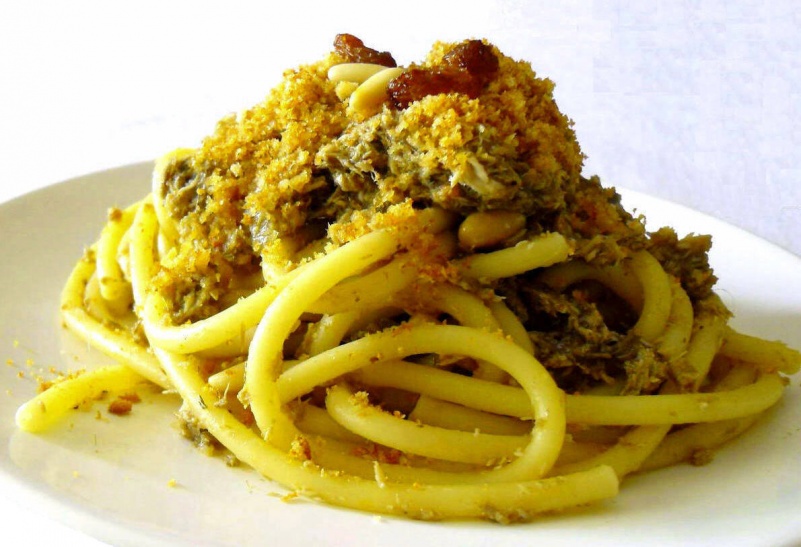
St Joseph
aka
San Giuseppe
The March 19 is the Feast of St. Joseph , the day when, in Italy , we also celebrate all the dads and is the festival that opens the door to the Spring .
The festivities in honor of the Patriarch St. Joseph are widespread in many cities and towns of the Sicilia . the figure of St. Joseph , foster father of Jesus and husband of Maria , is deeply felt and venerated, also demonstrated by the many Sicilians who bear his name. in the memories of most Sicilians is the memory of the picture, the statue or printing of St. Joseph in her arms the Child Jesus , in plain sight in the homes of our grandparents . the Holy Patriarch is loved even today, as a symbol of ' honesty , of' humility , of ' love and family , and sacred values absolutely be protected. in Trapani , in many municipalities belonging to the Diocese ofMazara del Vallo , as Campobello di Mazara , Castelvetrano , Santa Ninfa , Salemi , are set up altars to honor the patriarch St. Joseph . in almost all the countries of the Diocese is celebrated rite of the " Dinner of the Saints ": the Saints knock on the door asking for hospitality; twice they are not accepted. The third opens wide the door and the Saints enter the house, where you will eat dinner. A Salemi you start with dinner on March 19th when we celebrate the religious rite of the " Dinners San Giuseppe ", last a week, with exhibitions and exhibitions food and wine ; are set up altars decorated with lemons , twigs d ' laurel , orangesand the typical " bread " manufactured by local women into veritable works of art. The " bread" in the shape of the symbols of Pentecost , like the fish , the three nails, scale, or make reference to nature; devotees who organize dinner must prepare a meal with 101 dishes , made from vegetables , grains , fish , fruit and sweets of every variety. After dinner there is the rite of the blessing of the " bread " which are then distributed to the children, who represent the Holy Family and the many visitors who came to attend the " Eaten there for Saints ." In Sicily , each holiday has a flat or a traditional sweet and the list would be so vast to enumerate them all to risk of forgetting is always someone. At the Feast of St. Joseph , on the
Sfinci San Giuseppe
St Josephs Day Pastry
tables there was a menu special kind: according tradition imbandire you had a board with various kinds of foods, especially with the bread (symbol of fertility and prosperity) to give refreshment to pilgrims and fugitives; this custom recalls the escape of Mary, Joseph and Jesus to Egypt to escape Herod's order to kill all the firstborn males. We start from the first course, as the famous pasta with sardines and wild fennel , or the virdi soup of San Giuseppi (legumes and vegetables with leftover pasta of various types) from Palermo, or even the " ministredda of"Augusta (whose ingredients must be nineteen). the " maccu ", known throughout the region but especially in the Syracuse area, composed of dried beans , lentils , spinach , onions ,dried chestnuts , oil and ... more; He was present in every home and you had to send a sign of hope, family, friends, neighbors and even the poor of the neighborhood. And then the beccaficu sardines , broccoli and " sparaceddi " and many other dishes, not meat, because we are in the period of Lent . Finally the cake, with the preparation of Sfinci of St. Joseph . It is afried sweet typical of Sicily , widespread especially in western areas of the island, originally produced in Palermo , is part of the cultural and traditional heritage of the region.
SFINCI
The origins of sfincia are very old, seem to date back to the Persians, and there are traces both in the Bible and in the Qur'an , although under different names.
As for the ' origin of the name , there are several schools of thought: according to some, the name derives from the Latin " spongia " (sponge), while others derive from the Arabic " isfanǧ " (sponge), a name that was given to the special soft pancakes, irregularly shaped, and, precisely spongy, that Arabs ate covered honey or sugar .
the transformation of the Arab sweet fried sfincia we know is due to the Poor Clares of theMonastery of the Stigmata of St. Francis (the monastery was demolished in 1875, stood on the site where today we admire the Teatro Massimo ), who dedicated the sweet to the Holy of the Meek , St. Joseph .
later, the skill of confectioners Palermo turned the humble sweet delicacy in enriched withricotta cheese and candied fruit that, in recent times, you can enjoy all year round.
Saint Joseph's Day Pasta
RECIPE in GRANDMA BELLINO'S ITALIAN COOKBOOK
RECIPES FROM MY SICILIAN GRANDMOTHER
by Daniel Bellino Z
GREAT SICILIAN HOME-COOKED RECIPES
FROM SCILIAN GRANDMOTHER GIUSEPPINA SALEMI BELLINO
.
.
.


